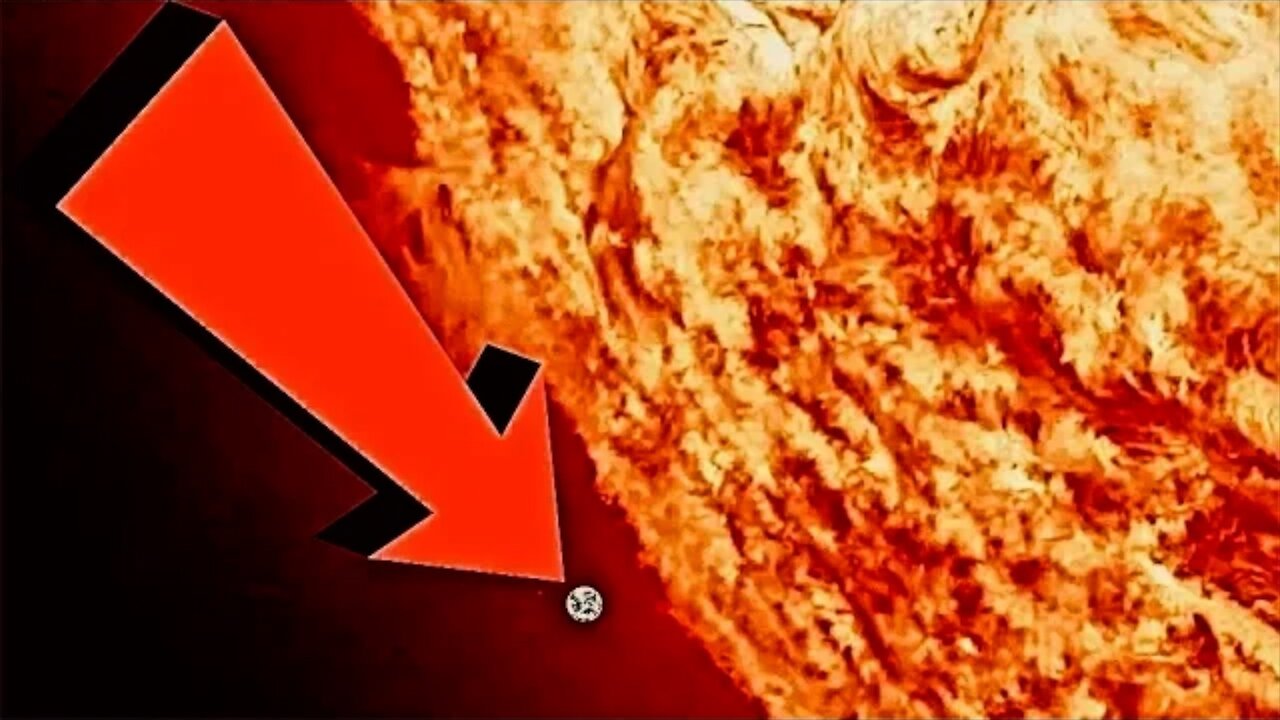Premium Only Content

Planet Earth's Size Compared to Our Solar System & Galaxy - Great Animation
Earth vs the solar system: Amazing animation reveals how massive - and tiny - our planet is compared to other cosmic bodies. The scale of the universe in terms of size is mind-bending enough – but considering the mass of planets can provide a new perspective. How big is the Sun compared to the Earth? It’s difficult to comprehend the size of that big burning ball of gas in the sky, especially as it is 149,600,000 kilometers (92,957,130 miles) away. 1,300,000 Earths could fit into an empty sphere the size of the Sun. Earth, the third planet from the sun is the densest in the solar system.It is the 5th largest planet, in the solar system, and has a radius of 6,378 km at the equator.
Light can circle our planet about seven and a half times in a single second.
The moon marks the end of Earth’s gravitational dominance. This satellite can be found orbiting at a distance of 385,000 km, which is about 60 times larger than Earth’s radius.
It takes light about 1.3 seconds to travel from Earth to the moon.
There are currently some 7 billion people on our planet. However, there have been some estimates 106 billion people over Earth’s history.
A solid iron ball that is 1,500 miles wide sits at the center of the planet.
In the Solar System, all of the sudden, Earth starts looking small. The total mass of the solar system is about 333,345.997 Earth masses.
Meaning that Earth makes up about 0.0003% of the total mass of our solar system.
For comparison, Earth makes up about 0.2% of the total mass of the planets.
We orbit the sun at an average distance of 93 million miles, which is equal to 1 Astronomical Unit.
It takes light a little over 8 light-minutes to travel from the Sun to Earth (that means, if the sun vanished right now, you wouldn’t know it for another 8 minutes).
The farthest planet from the Sun, Neptune, orbits at an average distance of 30 AU.
Voyager is about 119 AU from Earth.
The dwarf planet Sedna, the farthest such (known) object from the Sun, orbits at an average of 526 AU.
The solar system has an estimated radius of about two light-years.
Our Local Neighborhood...
Our closest star is Proxima Centauri at a distance of four light-years. About 53 star systems inhabit the Local Interstellar Cloud. Excluding our own solar system, there are six known planets in our neighborhood and another two suspected planets. Our local cloud is about 30 light-years across.
The Milky Way...
Home to our solar system, we orbit the galactic center at an average distance of 28,000 light-years.
One orbital period (one galactic year) is equal to about 250 million years.
We have completed about 15 orbits since life started on Earth.
The Milky Way itself is about 100,000 light-years across and is home to about 400 billion stars.
The bulge at the center is roughly 12,000 light-years in diameter.
Based on data acquired from the Kepler Space Telescope, there could be as many as 40 billion Earth-sized planets orbiting in the habitable zones of sun-like stars and red dwarf stars within the Milky Way Galaxy (that’s a lot of planets that could have life as we know it).
The Milky Way has a halo of dark matter that makes up over 90% of its mass. Yes, 90%.
The Milky Way is thought to have some 300 billion stars. The largest known galaxy, IC 1101, has over 100 trillion stars.
Music: Halls of Neptune by Dhruva Aliman
Amazon - https://amzn.to/3ex2DEb
https://music.apple.com/us/artist/dhruva-aliman/363563637
https://dhruvaaliman.bandcamp.com/album/neptunes-overtone
http://www.dhruvaaliman.com/
Spotify - https://open.spotify.com/artist/5XiFCr9iBKE6Cupltgnlet
-
 LIVE
LIVE
The Rubin Report
1 hour agoTech Legend Gives the Real Odds of Elon Musk Successfully Cutting Gov’t | Joe Lonsdale
2,433 watching -
 53:31
53:31
Dave Portnoy
2 hours agoThe Unnamed Show With Dave Portnoy, Kirk Minihane, Ryan Whitney - Episode 40
9.11K1 -
 2:45:29
2:45:29
Matt Kohrs
13 hours agoMarket Crash, Breaking Inflation News & Payday Friday || The MK Show
26.8K4 -
 LIVE
LIVE
LFA TV
13 hours agoWHAT IS HAPPENING IN DC?? | LIVE FROM AMERICA 12.20.24 11am EST
3,644 watching -
 LIVE
LIVE
Caleb Hammer
1 hour agoDelusional Lady Destroys Life To Hurt Her Ex | Financial Audit
219 watching -
 49:01
49:01
BonginoReport
4 hours agoThe Final Countdown to Shutdown (Ep.109) - 12/20/2024
55.3K148 -
 LIVE
LIVE
Wendy Bell Radio
6 hours agoCongress Plays Shutdown Chicken
11,228 watching -
 1:55:07
1:55:07
Jeff Ahern
2 hours ago $0.85 earnedNews of the day with Jeff Ahern ( Here comes the holiday weekend!)
8.32K -
 1:18:33
1:18:33
Game On!
15 hours ago $8.77 earnedCollege Football Playoff Round 1 BEST BETS! | Indiana vs Notre Dame Preview
63.2K4 -
 42:08
42:08
PMG
9 hours ago $3.80 earned"Hannah Faulkner and James Staake | PAYPAL WITHHELD 100K FOR POLITICAL VIEWS?!"
24.8K3